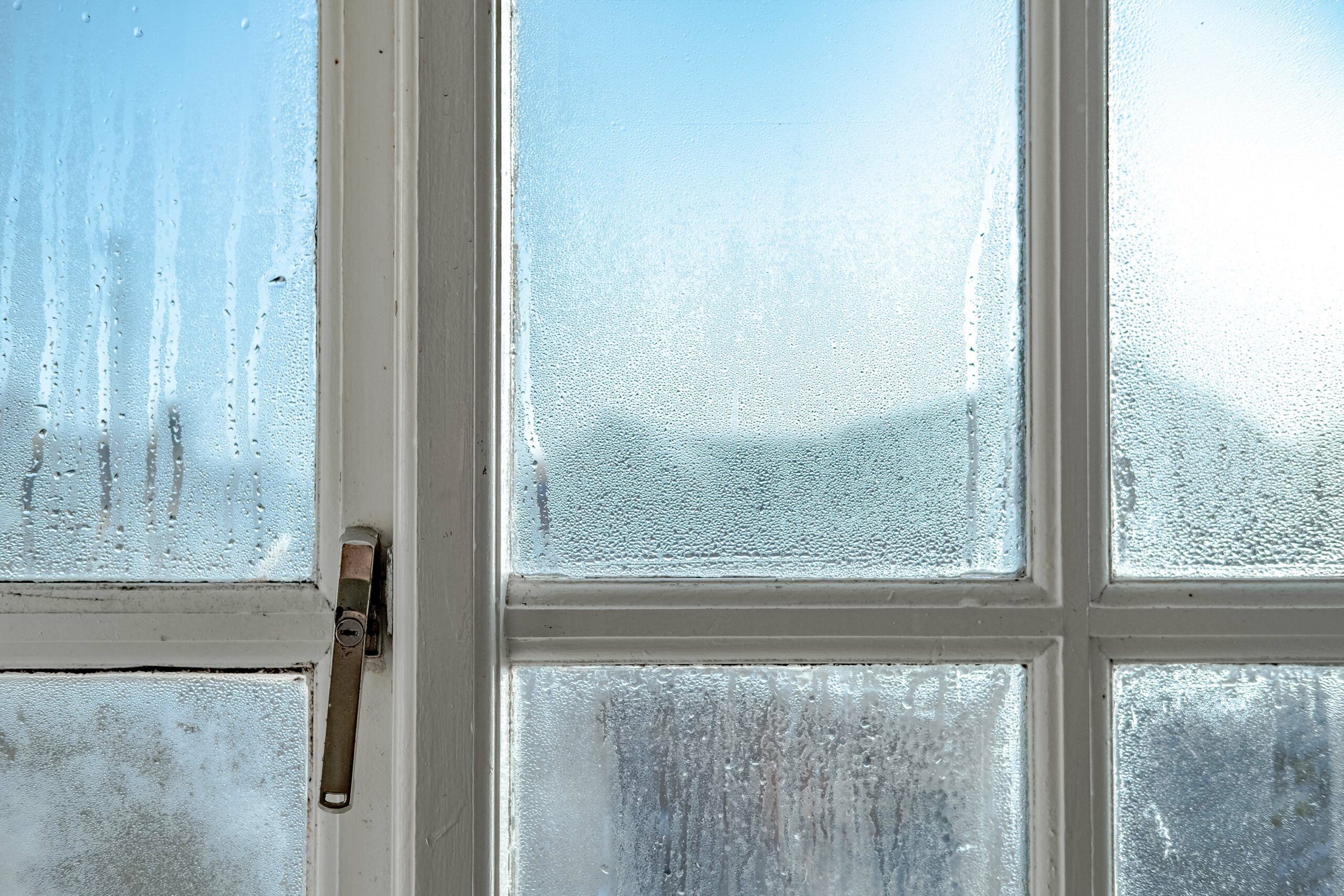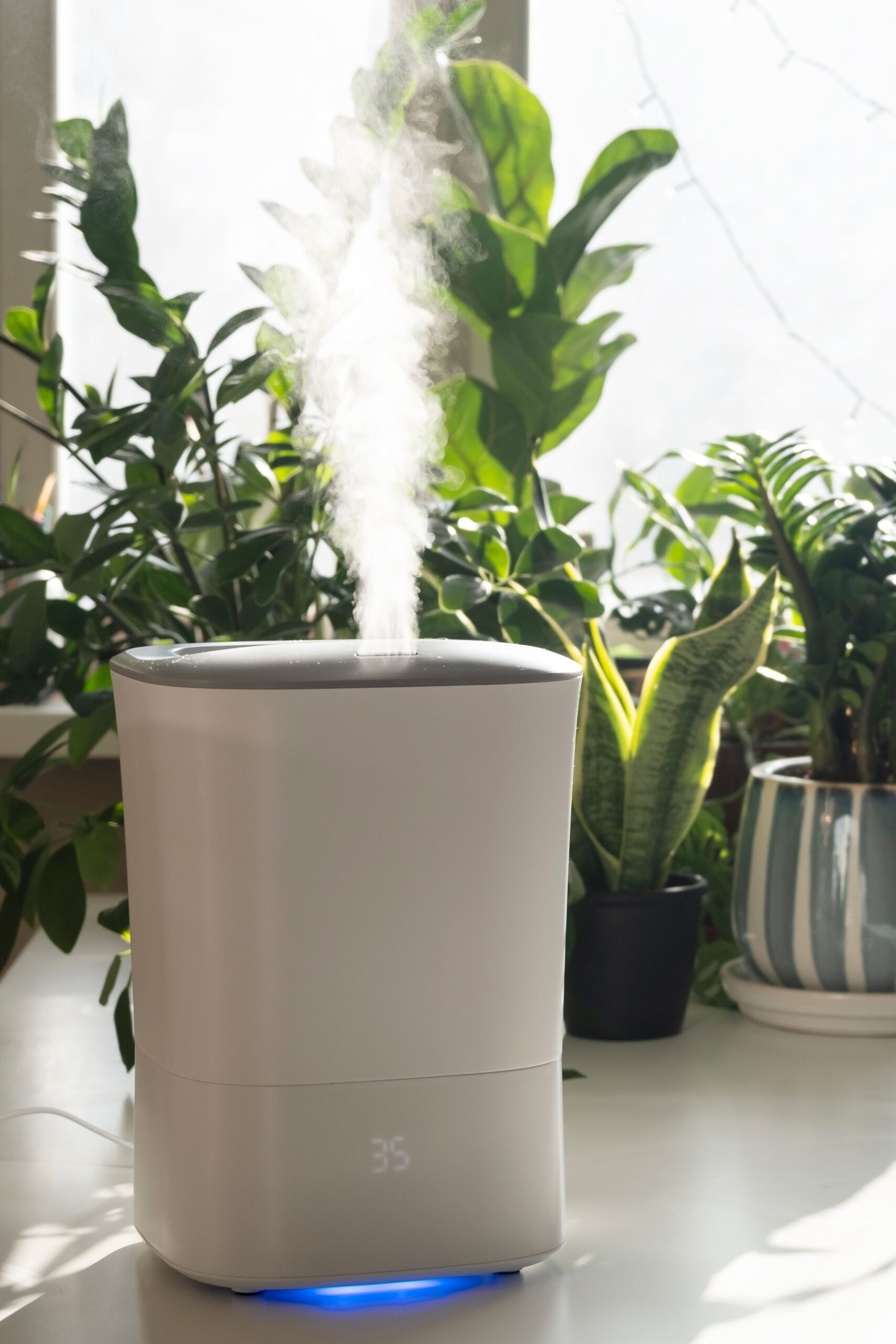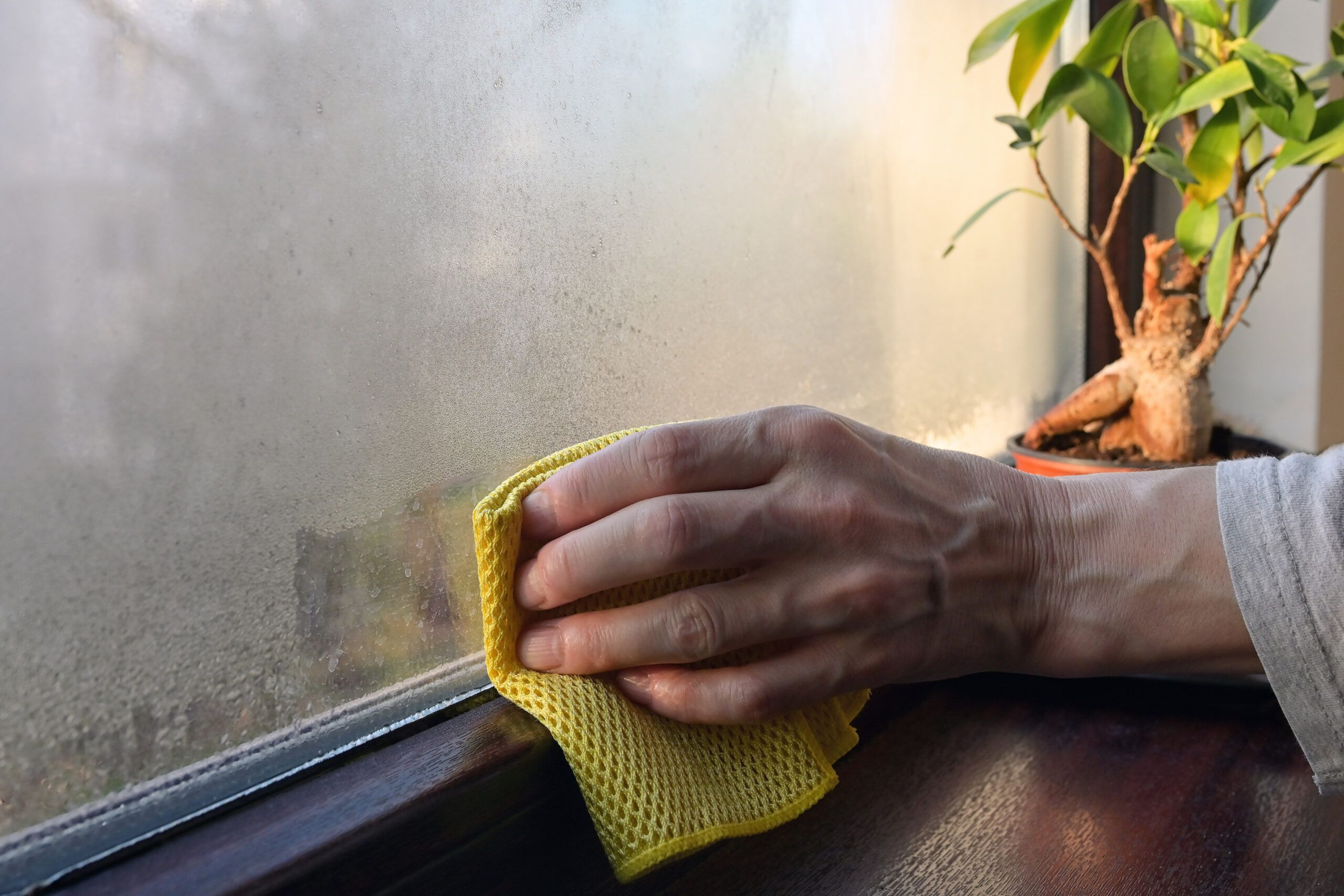Window condensation happens when there’s a significant temperature difference between the inside and outside of your home. While some condensation is normal, excessive moisture can be problematic. This guide explains the causes of window condensation, identifies its sources, and teaches how to keep your windows clear.
What Causes Window Condensation?
Condensation forms on windows when warm, moist air comes into contact with a cooler surface. This temperature difference causes water vapor in the air to condense into liquid droplets on the glass. In homes, this often happens when indoor humidity levels are high and outdoor temperatures are low, creating the perfect conditions for condensation to occur.

Identifying the Source of Condensation
There are three main sources of window condensation, all of which indicate different issues. Here’s how to recognize them.
External Condensation
External condensation forms on a window’s outer surface and is generally not a cause for concern. This type of condensation is similar to dew forming on grass in the morning. It typically occurs when the outside air is warmer and more humid than the window’s surface temperature.
Internal Condensation
Internal condensation appears on the window’s inside surface and is often a sign of excess humidity within your home. This type of condensation is more common during colder months when indoor air is warmer and more humid than the cold air outside.
Between-Pane Condensation
If you notice condensation between the panes of your double- or triple-glazed windows, this indicates a seal failure. The insulating gas between the panes has escaped, allowing moisture to enter. This type of condensation cannot be wiped away and requires professional attention.
Dangers of Window Condensation
While some condensation is normal, excessive window moisture can lead to several problems if left unchecked.
Mold and Mildew Growth
High humidity levels and persistent moisture create an ideal environment for mold and mildew to thrive. These fungi can grow on window frames, sills, and surrounding walls, potentially causing health issues for occupants and damaging your home’s structure.
Damage to Window Frames and Surrounding Areas
Constant exposure to moisture can cause wooden window frames to warp, rot, or develop mold. In severe cases, the excess moisture can seep into walls, leading to paint peeling, wallpaper damage, and even structural issues if left unaddressed for extended periods.
Preventing External Window Condensation
While external condensation is generally harmless, there are ways to minimize its occurrence if it’s bothersome.
Natural Solutions
One of the simplest ways to reduce external condensation is to allow for better air circulation around your windows. Trim back any vegetation that may be blocking airflow, and make sure your gutters and downspouts are clear to prevent excess moisture near your home’s foundation.
Using Water Repellents
Applying a water repellent to your windows’ exterior can help prevent condensation from forming. Products such as Rain-X, typically used on car windshields, can also work on home windows. These treatments encourage water droplets to bead up and roll off the surface rather than clinging to the glass.
Managing Indoor Humidity Levels
Controlling indoor humidity is key to preventing internal window condensation. Understanding ideal humidity ranges and how to measure them is key to maintaining a comfortable and healthy home environment.
Ideal Humidity Ranges
Your home’s ideal relative humidity varies by season. According to the U.S. Environmental Protection Agency (EPA), you should aim for 30%–40% in winter and 40%–50% in summer. Maintaining these levels helps prevent condensation while ensuring comfort and avoiding issues related to overly dry air.
How To Measure Indoor Humidity
You can measure your home’s humidity levels using a hygrometer, an inexpensive device available at most hardware stores. Many modern thermostats also include built-in humidity sensors, making it easy to monitor levels throughout your home.

Strategies To Reduce Indoor Window Condensation
These strategies help lower indoor humidity levels and reduce window condensation on the inside of your windows.
Adjusting Humidifier Settings
If you use a humidifier, especially during winter, make sure it’s set to the ideal humidity levels mentioned earlier. This simple step can significantly reduce window condensation.
Improving Air Circulation
Good air circulation helps distribute moisture evenly throughout your home, reducing the likelihood of condensation forming on cool surfaces such as windows. Use ceiling fans or portable fans to keep air moving, especially in rooms prone to high humidity.
Proper Ventilation Techniques
Proper ventilation is crucial for controlling indoor humidity. Use exhaust fans in bathrooms and kitchens when showering or cooking to remove excess moisture. Consider installing a radon mitigation system, which can also help improve overall home ventilation.
Relocating Moisture-Producing Items
Keep plants, firewood, and other moisture-producing items away from windows. These items release moisture into the air, which can contribute to condensation when near cooler surfaces such as windows.
Dealing With Window Condensation in Specific Rooms
Some rooms in your home are more prone to condensation due to their functions. Here’s how to address condensation in these areas.
Kitchens
Cooking generates a lot of moisture. Use your range hood or exhaust fan when cooking, and open windows if the weather allows. Covering pots and pans while cooking can also help reduce moisture release.
Another overlooked area is the refrigerator. Sometimes the condensation within the fridge can also contribute to the overall humidity in the kitchen. Check that your fridge door seals properly and avoid keeping it open for long periods.
Bathrooms
Bathrooms are naturally humid environments. Run the exhaust fan during and after showers, and keep the bathroom door open when possible to allow moisture to dissipate. Consider using a squeegee on shower walls and doors to remove excess water after use.
In addition to the exhaust fan, periodically check for leaks in faucets, showerheads, and under sinks. Even small leaks can contribute to higher humidity levels in the bathroom.
Basements
Basements are often cooler and more humid than the rest of the house. Use a dehumidifier to control moisture levels, ensure proper ventilation, and address any water leaks or seepage issues promptly.
Check the basement walls and floor for any signs of water ingress. Sometimes, water can seep through basement walls due to poor drainage outside. Invest in proper drainage solutions and waterproofing measures if needed.
Bedrooms
While not as commonly affected, bedrooms can also experience condensation, especially during colder months. Ensure that bedrooms are well-ventilated, and avoid using humidifiers unless necessary. Regularly open windows to allow fresh air to circulate.
Bedding and mattresses can also trap moisture. Ensure you regularly wash and air out bedding, and consider using dehumidifying products such as silica gel packs in wardrobes and drawers to help manage moisture levels.
Tools and Products To Prevent Window Condensation
Several tools and products can help you manage humidity levels and prevent window condensation.
Dehumidifiers
Dehumidifiers are effective at removing excess moisture from the air. They’re particularly useful in basements, laundry rooms, and other areas prone to high humidity.
Look for dehumidifiers with built-in hygrometers to monitor humidity levels. Some advanced models automatically adjust their operation based on the detected humidity, ensuring optimal performance.
Moisture Eliminators
Products such as DampRid use moisture-absorbing crystals to reduce humidity in small spaces. These can be effective in closets, bathrooms, and other enclosed areas. Consider using silica gel packs for smaller spaces. They serve a similar purpose and can be dried in an oven and used again.
Exhaust Fans
Installing and regularly using exhaust fans in kitchens and bathrooms can reduce moisture-laden air. Make sure your fans vent to the outside, not into an attic or wall cavity.
Check the capacity of your exhaust fans. A fan that’s too small for the space won’t effectively remove moisture. Upgrading to a more powerful fan can make a difference in managing humidity levels.
When To Seek Professional Help
While many condensation issues can be resolved with do-it-yourself (DIY) methods, some situations require professional treatment.
Signs of Seal Failure
If you notice condensation between the panes of your double or triple-glazed windows, this indicates a window seal failure. This requires professional repair or window replacement, as the window’s insulation isn’t performing as it should.
Window Replacement Considerations
If your windows are old, single-paned, or consistently problematic, it might be time to consider replacement. Modern, energy-efficient windows can significantly reduce condensation issues while improving your home’s overall energy performance. Consider sealing your windows for winter to improve their performance in the short term.
Mold Remediation
Professional mold remediation may be necessary in cases where mold and mildew have become significant due to persistent condensation. Mold can pose severe health risks, and it’s essential to handle it correctly to prevent recurrence.
Our Conclusion
Window condensation happens for several reasons. It can be normal, especially during seasonal changes. However, if you consistently experience excessive window moisture or notice signs of damage, consult a professional to address any mold suspicions as soon as possible.

